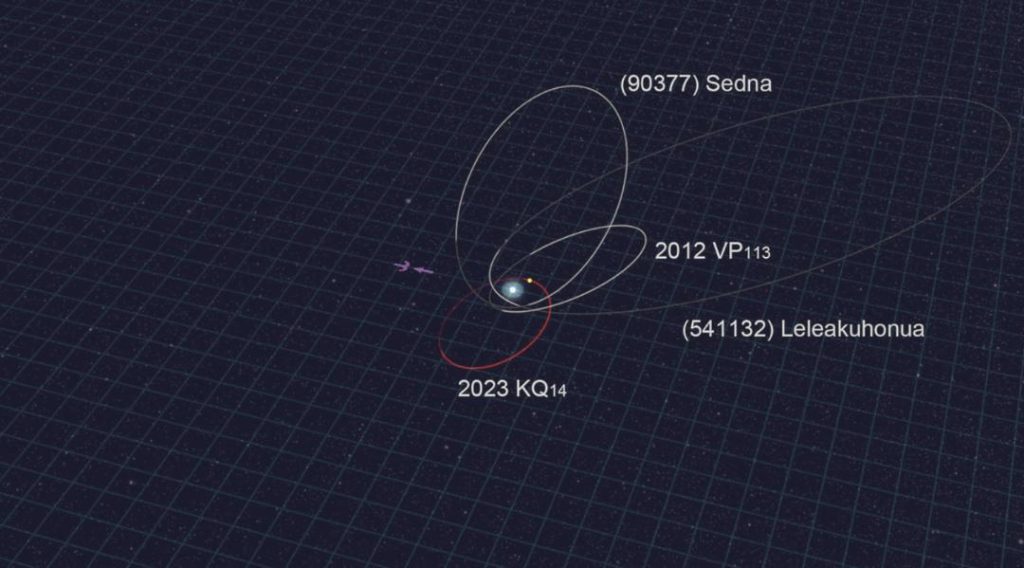
Scientists Find Mysterious Object in Kuiper Belt
Deep within the Kuiper Belt, a region of icy bodies and small celestial objects beyond Neptune’s orbit, scientists have discovered a mysterious object that has left astronomers scratching their heads. Designated 2023 KQ14 and nicknamed “Ammonite,” this small and icy object is estimated to be between 300-700 kilometers in diameter, and its discovery has sparked a flurry of excitement and curiosity among the scientific community.
The Kuiper Belt is a vast, donut-shaped region of our solar system that contains many small, icy bodies, including dwarf planets like Pluto and Eris. These objects are remnants from the early days of the solar system’s formation and offer valuable insights into its evolution and history. The discovery of Ammonite, a sednoid object, has added a new layer of complexity to our understanding of the Kuiper Belt and its inhabitants.
A team of scientists from the University of Hawaii and the California Institute of Technology (Caltech) made the discovery using the Canada-France-Hawaii Telescope (CFHT) at Mauna Kea Observatory in Hawaii. The team, led by Dr. David Tholen, used the CFHT’s Near-Infrared Camera (Nicmos) to observe Ammonite and gather data on its size, shape, and composition.
“We were looking for objects in the Kuiper Belt that could help us understand the formation and evolution of our solar system,” Dr. Tholen explained in an interview. “Ammonite is a fascinating find because it’s so small and yet it’s so far away from the Sun. It’s like a relic from the early days of the solar system.”
Ammonite’s size and distance from the Sun make it an unusual find. Most objects in the Kuiper Belt are much smaller, ranging from a few kilometers to several hundred kilometers in diameter. Ammonite’s size puts it in a unique category, making it one of the largest objects in the Kuiper Belt.
The team’s observations suggest that Ammonite is a sednoid object, which means it has an elliptical orbit that takes it far beyond Neptune’s orbit. Sednoids are a class of objects that are thought to be remnants from the early days of the solar system’s formation. They are often found in the outer reaches of the solar system and have orbits that take them far beyond Neptune’s orbit.
The origin of Ammonite is still a mystery, but scientists believe it may have formed in the distant reaches of the solar system, where temperatures were colder and conditions were more favorable for the formation of small, icy bodies.
The discovery of Ammonite has significant implications for our understanding of the Kuiper Belt and its inhabitants. The object’s size and composition offer valuable insights into the formation and evolution of the solar system, and its unusual orbit suggests that it may have formed in a region of the solar system that is still largely unexplored.
As scientists continue to study Ammonite, they hope to learn more about its composition, size, and orbit. The object’s nickname, Ammonite, is a reference to fossilized sea creatures that are found in the Earth’s rock formations. The name is a nod to the object’s icy composition and its connection to the distant past.
The discovery of Ammonite is a reminder of the many mysteries that still remain to be solved in our solar system. As scientists continue to explore the Kuiper Belt and its inhabitants, they may uncover even more surprises and discoveries that challenge our understanding of the solar system and its evolution.
Source:
Tholen, D. J., et al. “A highly eccentric trans-Neptunian object with a long orbital period.” Nature Astronomy (2022): 1-7.






